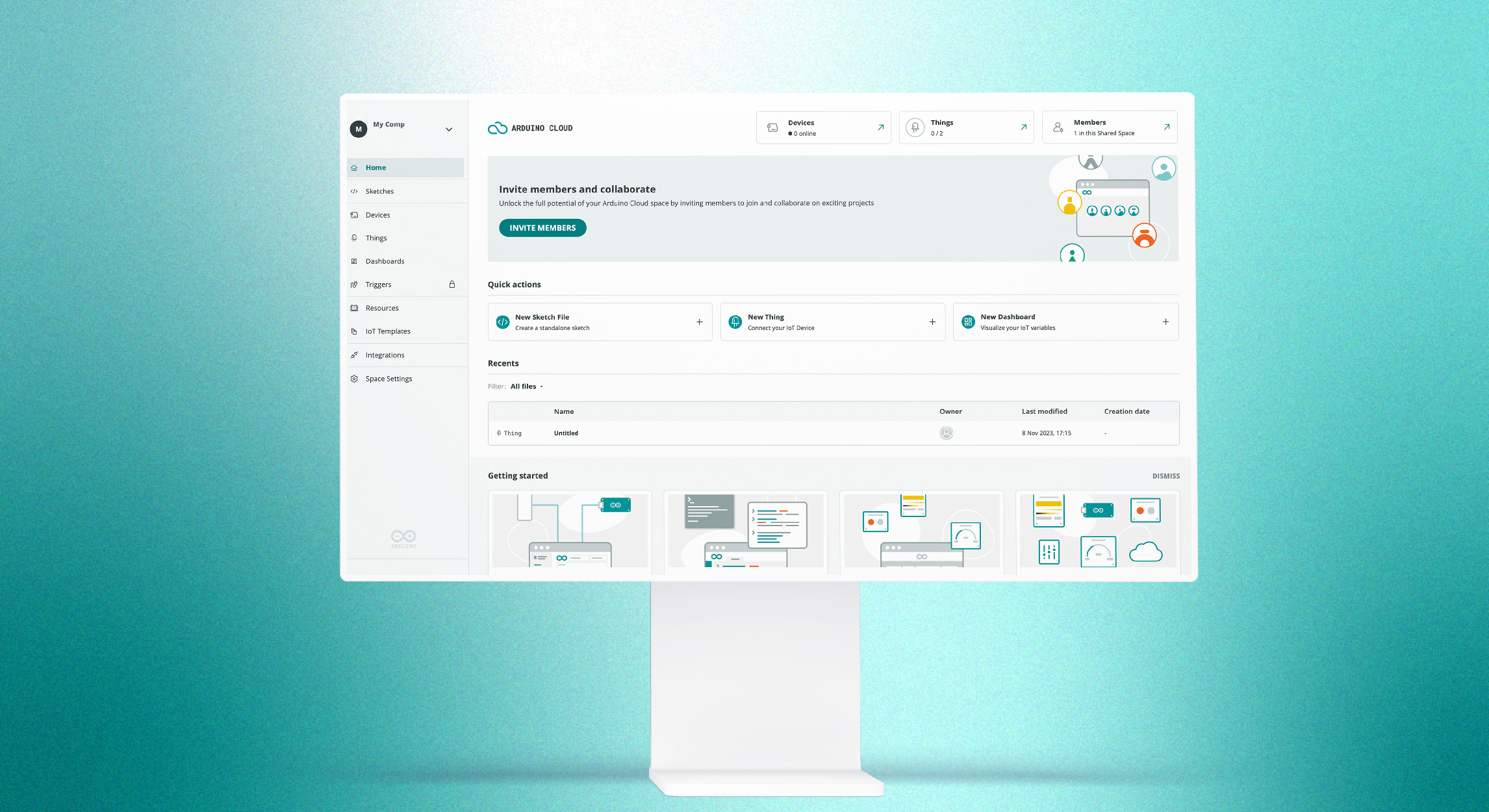Collaborative Learning: Transforming Learning with Cloud-Based Solutions

At Arduino, we believe that collaboration and interactivity play pivotal roles in enhancing the learning experience in educational technology.
One such example is the Arduino Cloud for Schools “Shared Spaces,” a feature designed to foster collaboration among students and streamline the teaching process for educators.
In this article, we explain what Shared Spaces are, how you can leverage them in your classroom, and the many benefits they offer to both teachers and students, including interactive learning and teaching efficiency.
But first…
What are Shared Spaces?
Shared Spaces are collaborative environments in the Arduino Cloud where students and teachers can come together to work on projects, share resources, and communicate ideas.
Think of them as digital workshops where the creation, testing, and refinement of IoT (Internet of Things) and coding projects happen collectively. These spaces are designed to reflect the dynamic nature of a classroom, adapting to various teaching and learning styles.
Within a Shared Space, you can access, modify, and contribute to projects, making it an ideal tool for group assignments, class projects, and collaborative learning activities.
How to use Shared Spaces in your classroom
Integrating Shared Spaces into your classroom is straightforward and can significantly enhance the learning experience. Here's how you can get started:
- Create a Shared Space: Begin by setting up a Shared Space for your class. You can create multiple spaces for different groups, subjects, or projects. You can create it here.
- Invite participants: Once your space is set up, invite your students to join. This can be done through email invitations or shared links.
- Assign projects: Distribute project assignments within the Shared Space. You can create templates or starter projects to help students begin their work.
- Facilitate collaboration: Encourage students to share ideas, provide feedback, and collaborate on projects within the space. This can be through direct modifications, comments, or shared resources.
- Monitor progress: As a teacher, you can oversee all activities within the space. This includes tracking project progress, providing guidance, and assessing contributions.
By incorporating Shared Spaces into your curriculum, you can facilitate a more interactive learning environment and prepare students for the collaborative nature of the modern workforce.
6 benefits of Shared Spaces
The implementation of Shared Spaces in your teaching strategy comes with a range of benefits, including:
- Shared Spaces help you build a collaborative learning environment where students can work together, share insights, and solve problems as a team.
- Keep all project-related materials, discussions, and progress tracking in one place, making it easier to manage class projects.
- Provide immediate feedback and support directly within the projects, helping your students to learn and adjust in real-time.
- Shared Spaces can be accessed from any device with internet connectivity, allowing students to work from anywhere, at any time.
- Working in Shared Spaces helps students develop essential skills such as teamwork, communication, problem-solving, and digital literacy.
- The interactive nature of Shared Spaces can lead to higher levels of student engagement and interest in the subject matter.
Incorporating Arduino Cloud's Shared Spaces into your classroom not only enhances your students’ educational experience, but it also streamlines your workflow as an educator. Shared Spaces help you set the stage for a more interactive, efficient, and engaging learning environment.
Embrace the future of collaborative education with Arduino Cloud for Schools Shared Spaces and watch as your classroom transforms into a dynamic, interactive learning hub.
Find out more about the Arduino Cloud for Schools here.